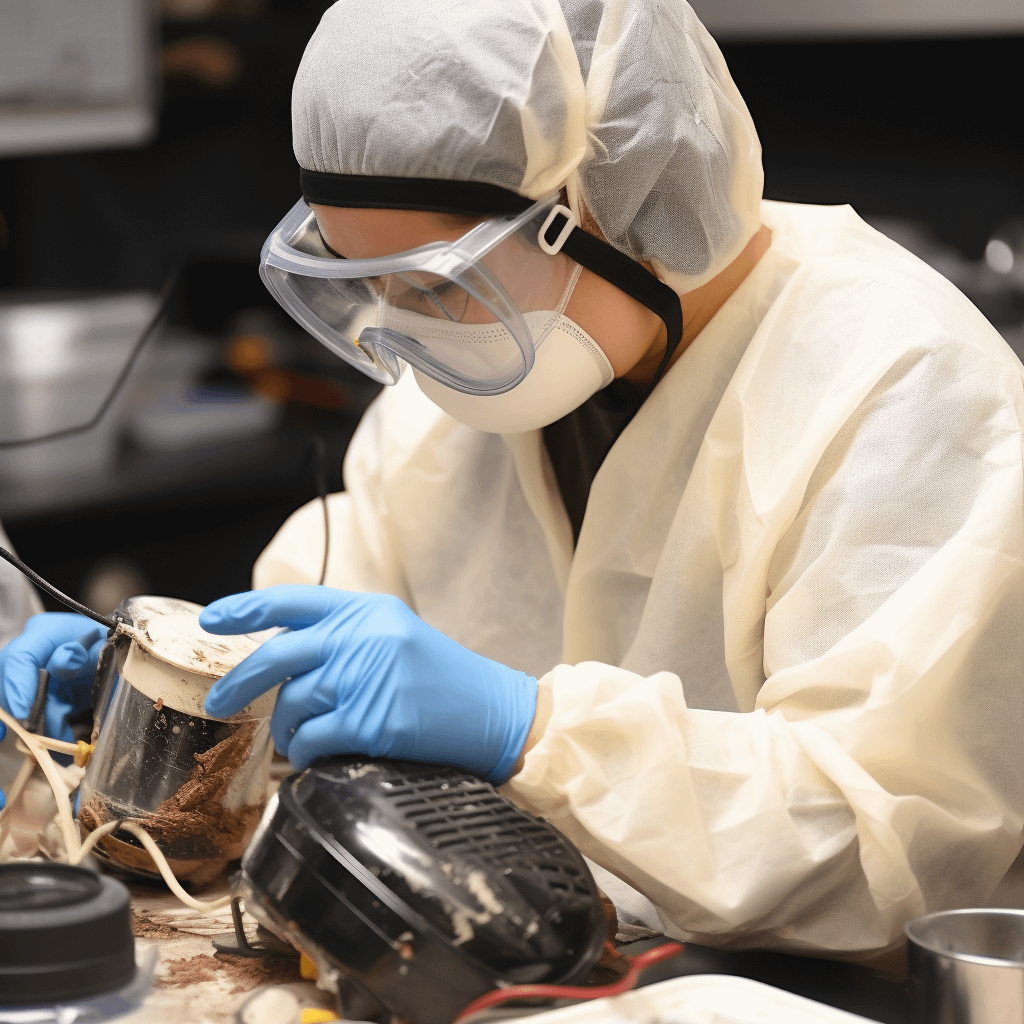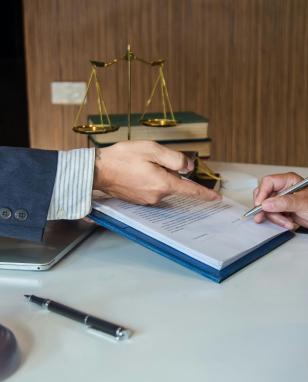Each year, thousands of American residents are killed and millions injured by defective and unsafe products. Consumer product injuries totaled 12,740,256 in 2023, according to data from the National Safety Council. Product designers and manufacturers have a duty to create and distribute reasonably safe products that are labeled appropriately and do not cause harm when used properly, yet the CPSC reports between 200 and 300 yearly product recalls.
If you or someone you love was injured by a product that was dangerous, defective, labeled inappropriately, or marketed inappropriately, you could be entitled to financial compensation. The best way to find out if you have a meritorious claim is by speaking with a Chicago product liability lawyer. The Chicago product liability attorneys at Power Rogers have extensive experience dealing with these types of cases and can help you obtain compensation for your injuries so you can access the best available resources.
Why Should I Hire a Product Liability Attorney at Power Rogers?
Product liability cases are complex and involve powerful opponents. Speaking with our team in a free consultation is a good way to help you orient yourself and prepare. We’ve recovered billions of dollars for our clients and handled numerous high-profile product liability cases. Power Rogers has led the state in the most dollars recovered for its clients in thirteen of the last fifteen years.
When it comes to our ability to represent you, the results speak for themselves. Contact our firm today to discuss your options with our product malfunction lawyers in Chicago. You don’t pay unless we win your case.
What Is Product Liability?
In Illinois, “product liability” is the concept of holding designers and manufacturers responsible for harm caused by dangerous or defective products. There are three main types of product liability claims: manufacturing defects, design flaws, and failure to provide adequate warning.
Manufacturing Defects
Not all product defects have to do with design. If manufacturing defects are present, the business responsible for the actual manufacture of the product may be liable. A few examples of manufacturing defects are incorrect installation of electrical wiring, using the wrong materials to build a product, and assembling product parts incorrectly.
Design Flaws
Sometimes, a product is unsafe because of the way it’s made. If a product is harmful due to its design flaws, it would be dangerous even if it was made with the right materials and correctly assembled. For example, if a particular car model catches fire at speeds over 30 miles per hour, the designer could be held liable for injuries.
Failure to Provide Adequate Warning
Some product liability lawsuits arise because a business fails to warn consumers of possible dangers caused by foreseeable use of the product. For example, if a children’s toy can be separated into small parts that pose a choking hazard and a child becomes injured or dies after choking on the toy parts, a failure to warm lawsuit may be pursued.

Legal Process of Filing a Product Liability Lawsuit
If a product is linked to deaths or injuries, those injured individuals or their families may have the opportunity to file a lawsuit. These lawsuits maybe filed against multiple entities within the production line or point of sale.
Here’s a brief overview of the steps involved in filing a product liability lawsuit:
1. Investigation and Assembling Evidence
For product liability lawsuits to be successful, you must provide evidence of the product defect, the injury, and the link between the two. Start by gathering the following:
- The product itself
- Proof of purchase
- Photos and videos of the product
- Photos and videos of your injuries
- Copies of your medical records
If a product liability attorney takes your case, they will be able to tell you if you need to assemble any additional evidence to build your case.
2. Consulting a Product Liability Attorney
Defective product lawyers can take a careful look at the evidence you have. They may also talk to you about the circumstances of your injuries. If the attorney you consult thinks you have a viable case, they will likely agree to work with you.
3. Filing the Lawsuit and Serving the Defendants
Next, your product liability attorney will start the lawsuit process. This involves filing the lawsuit and having the complaint and a court summons delivered (or “served”) to the at-fault party.
4. Settlement Negotiations
A majority of product liability cases are settled prior to trial. That means the at-fault party pays you a certain amount of money in exchange for you dismissing the lawsuit. Our product liability attorneys can advise you on the reasonable value of your case in preparation for settlement discussions as well as the risks and benefits of a settlement offer and proceeding to trial if the settlement offers are rejected.
5. Going to Trial
If the case cannot be settled, it will go to the trial phase. Both parties can present evidence, and a judge or jury will decide whether the other side is legally liable for your injuries.
How Do I Know if a Product Was Defective?
Understanding whether a product was defective is a question that takes special skill and investigation to answer. Sometimes, common sense is the best indicator of whether a product is defective. You should ask yourself these questions:
- “Did I use the product properly?”
- “Did the product do something it was not supposed to do?”
- “Did the product fail to do something it was supposed to do?”
- “Did the product cause an injury?”
Who Can You Sue for a Defective Product?
If a product’s defects result in the user’s injuries, then any of the following parties may be held liable:
- The Company Selling the Product: Retailers owe a duty to their customers to verify that the products they sell are safe. For example, suppose that a product has been recalled by the manufacturer, but a retailer continues to sell it anyway. The retailer may then be liable for any injuries caused by the units it sells.
- The Company Manufacturing the Product: Even if a product’s design is safe, the company or facility that manufactures it can introduce problems. For example, imagine a business has designed an outdoor playset for children. That business hires an outside contractor to build the playsets according to specifications. However, in an effort to save money, the contractor uses cheap, flimsy materials to make the playsets instead. If one of the playsets breaks and hurts a child, the contractor manufacturing the playsets may be held liable.
- The Company Designing the Product: Sometimes, the product design itself causes injuries. For example, many drug liability lawsuits come about because the drug’s makeup—or design—is dangerous.
One of the best-known recent product liability cases involving faulty drug design is that of Zantac. The company responsible for creating the antacid medication faced numerous lawsuits because ranitidine, Zantac’s active ingredient, was known to cause cancer.
Compensation You Can Recover in a Product Liability Case
If you win your product liability case, you may receive compensation for the losses or harms the product caused you. That compensation can generally be divided into two categories: economic and non-economic damages.
Economic damages refer to the compensation you receive for losses that are quantified monetarily, including the following:
- Your past medical bills
- Your lost wages
- Cost of future care needs
Non-economic damages refer to the intangible damages caused by an injury and include:
- Pain and suffering
- Permanent scarring and disfigurement
- Emotional distress
- Disability/loss of a normal life
In some cases, you may also be eligible to receive punitive damages. If a product liability attorney takes your case, they can help you identify all the losses you may be able to seek compensation for.
Product Liability Attorney: FAQs
What Should I Do if I Am Injured by a Defective Product?
If you suffer an injury from a likely defective product, seek medical attention immediately. You should also keep the product that caused it and make sure you have proof of purchase. From there, you can schedule a free consultation with a product liability attorney and explore your legal options.
How Do I Know if I Have a Product Liability Case?
In order to have a viable product liability case, you must have been harmed by a product malfunction or a product that did not meet safety standards. This is more nuanced than it sounds, so consult with a Chicago defective products attorney to find out if you have the standing to sue.
How Long Do I Have to File a Product Liability Claim?
Under Illinois law, you usually have two years from the date of injury to file a claim. However, you should speak to a faulty product lawyer as soon as possible as there are several exceptions that can extend and foreshorten that timeframe.
What Are the Common Types of Defective Products Involved in Lawsuits?
Theoretically, any product can cause an injury that leads to a lawsuit. However, medical devices, pharmaceuticals, automotive parts, household appliances, and children’s toys and equipment are most commonly involved in faulty product lawsuits.
Do I Need to Prove Negligence in a Product Liability Case?
In Illinois, the concept of strict liability applies to product liability cases. In strict liability situations, you do not need to prove negligence on the part of the designer or manufacturer. The fact that the product was dangerous and caused harm may provide sufficient basis for a lawsuit.
How Long Does a Product Liability Case Take to Resolve?
That depends on the details of the case. Due to their inherent complexity, most product cases including class-action lawsuits and those that go to trial can potentially take multiple years to be resolved.
How Much Does It Cost to Hire a Product Liability Attorney?
At Power Rogers, we work on a contingency basis. This means that you never pay anything upfront. Your initial consultation is free, and we take on the costs associated with investigation and prosecution of the case. We only recoup those costs and are paid an attorney’s fee if we successfully resolve your case.
Examples of Successful Product Liability Cases
At Power Rogers, our commitment to our clients translates to the best possible compensation for their case. Here are a few of our defective product lawsuit examples:
$93 Million — Product Liability/Aviation Accident
This case involved a commercial airplane crash due to defective equipment. We teamed up with a New York law firm to recover $93 million for several injured clients.
$2.8 Million — Product Liability/Medical Malpractice
This complex case involved a woman who underwent heart surgery. During the procedure, the bypass pump (a machine that works like a temporary artificial heart) failed. Because the pump did not re-circulate oxygenated blood, the patient suffered brain damage and death.
$27 Million — Product Liability
In this case, a baby formula manufacturer sold a product that was chloride-deficient. The infants fed the formula suffered brain damage and learning disabilities due to a chloride deficiency.
Contact Our Product Liability Lawyers for a Free Case Review
If you or someone you love has been harmed by a defective or dangerous consumer product, we invite you to contact the Chicago product liability attorneys at Power Rogers. We represent individuals throughout the state of Illinois, standing up for them against major multinational and multibillion-dollar manufacturers. Nothing intimidates us, especially when our clients’ futures are at stake.
Call Power Rogers or fill out our form for a free case evaluation.


